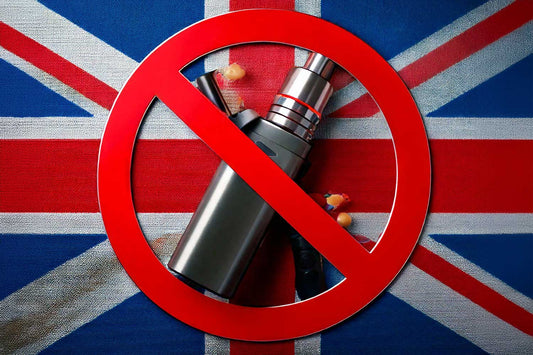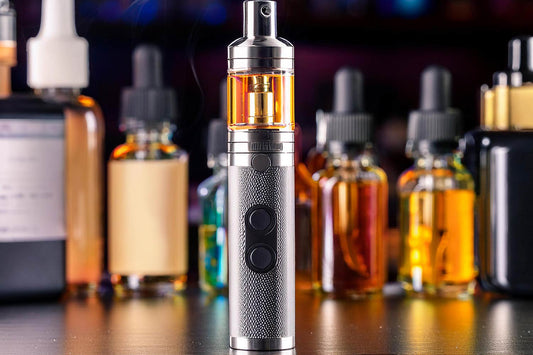The History and Impact of the Indoor Smoking Ban in the UK
The indoor smoking ban in the UK marks a significant public health intervention aimed at reducing the harmful effects of smoking and exposure to secondhand smoke. This initiative, which was implemented gradually across different regions and sectors, has had profound implications for public health, workplace safety, and societal attitudes towards smoking.
Early Efforts and Legislation
The journey towards a comprehensive indoor smoking ban in the UK began in the late 20th century as the health risks associated with smoking became increasingly clear. In the 1980s and 1990s, growing evidence of the dangers of secondhand smoke spurred initial legislative efforts to create smoke-free indoor environments.
One of the early legislative measures was the introduction of the Tobacco Advertising and Promotion Act in 2002, which restricted tobacco advertising and sponsorship. This Act laid the groundwork for more stringent regulations to follow.
In addition to national legislation, many local councils began to implement their own smoking restrictions in public spaces. Campaigns by public health organisations highlighted the risks of passive smoking, adding momentum to the push for broader, nationwide regulations. Public support for smoke-free environments grew as awareness increased about the dangers of secondhand smoke to vulnerable populations, including children, the elderly, and individuals with respiratory conditions.
The 2006 Health Act
The most significant milestone came with the Health Act 2006, which provided the legal framework for smoke-free indoor environments in England. This Act was pivotal as it mandated smoke-free workplaces and public places to protect non-smokers from secondhand smoke. The legislation was implemented in stages, with Scotland being the first to enact the ban in March 2006, followed by Wales and Northern Ireland in April 2007, and finally England in July 2007.
The passage of this Act was supported by a wide range of public health organisations, trade unions, and advocacy groups who presented compelling evidence of the health benefits of smoke-free environments. The Act was also notable for receiving bipartisan political support, reflecting the widespread recognition of the need to address the public health burden of smoking-related diseases.
Key Provisions of the Indoor Smoking Ban
The indoor smoking ban under the Health Act 2006 included several key provisions:
-
Smoke-Free Workplaces: All enclosed and substantially enclosed workplaces became smoke-free, including offices, factories, and vehicles used for work. This measure aimed to protect employees from exposure to secondhand smoke during their working hours.
-
Smoke-Free Public Places: Public places such as pubs, restaurants, and clubs were required to be smoke-free, ensuring a healthier environment for patrons and staff. This aspect of the legislation was particularly significant in sectors like hospitality, where smoking had previously been commonplace.
-
No-Smoking Signs: Businesses and establishments were required to display no-smoking signs to inform patrons and enforce the ban. The signage had to meet specific size and design requirements to ensure visibility and compliance.
-
Penalties: Non-compliance with the smoking ban attracted fines and penalties for both individuals and businesses. Business owners faced potential prosecution if they failed to enforce the rules within their premises.
The Act also included provisions for public education campaigns to inform citizens about the new rules and the reasons behind them. Government agencies collaborated with health organisations to promote understanding and support for the legislation.
Impact on Public Health and Society
The indoor smoking ban has had a profound impact on public health and societal norms in the UK. Some of the notable outcomes include:
-
Reduction in Smoking Rates: The ban contributed to a significant decline in smoking rates. According to Public Health England, smoking prevalence among adults fell from 21% in 2007 to 14.1% in 2019. This reduction is attributed to both the direct effects of the ban and the broader cultural shift it helped initiate.
-
Improved Indoor Air Quality: Studies showed substantial improvements in indoor air quality in pubs, restaurants, and workplaces, reducing the health risks associated with secondhand smoke exposure. For example, research found that levels of harmful particulate matter dropped significantly after the ban's implementation.
-
Positive Health Outcomes: The reduction in exposure to secondhand smoke led to a decrease in hospital admissions for heart attacks and respiratory conditions. A study published in the British Medical Journal reported a notable reduction in emergency admissions for asthma in children following the ban.
-
Cultural Shift: The ban contributed to a cultural shift, denormalising smoking and fostering a greater awareness of its health risks. Smoking in social settings became less acceptable, encouraging more individuals to consider quitting.
-
Economic Impact: While some businesses initially expressed concerns about potential revenue losses, long-term data indicated that many hospitality venues experienced stable or increased patronage as smoke-free environments attracted a broader customer base.
Challenges and Controversies
Despite the positive outcomes, the introduction of the indoor smoking ban was not without challenges and controversies:
-
Opposition from Businesses: Some pub and club owners were concerned about potential losses, particularly in establishments where smoking had been a significant part of the social experience. However, subsequent studies showed that these concerns were largely unfounded.
-
Enforcement Issues: Ensuring consistent enforcement of the ban required resources and training for local authorities. In the early stages, some establishments struggled to adapt to the new requirements.
-
Black Market Growth: As smoking restrictions tightened, the illicit tobacco trade experienced growth, raising concerns about tax revenue losses and public health risks associated with unregulated products.
Subsequent Developments and Legislation
Following the initial indoor smoking ban, further measures have been introduced to strengthen tobacco control. Notable developments include:
-
Plain Packaging: In 2016, the UK introduced plain packaging for tobacco products, eliminating branding and requiring standardised packaging with health warnings. This measure aimed to reduce the appeal of smoking, particularly among young people.
-
Smoking in Cars: In 2015, legislation was passed to ban smoking in private vehicles carrying children, protecting young passengers from secondhand smoke.
-
Tobacco Duty Increases: Successive governments have used tax policy to discourage smoking, with regular increases in tobacco duty making cigarettes more expensive and less accessible.
-
Public Awareness Campaigns: Ongoing educational initiatives continue to inform the public about smoking's health risks and promote cessation services.
The Global Context
The UK's indoor smoking ban is part of a broader global movement to reduce smoking-related harm. Countries worldwide have implemented similar measures, guided by the World Health Organisation's Framework Convention on Tobacco Control (FCTC). The success of the UK’s legislation has been cited as a model for other nations considering similar bans.
Comparative studies have shown that countries with comprehensive smoke-free laws generally experience similar public health benefits, including reduced smoking prevalence and improved cardiovascular health outcomes.
Conclusion
The implementation of the indoor smoking ban in the UK represents a landmark achievement in public health policy. By creating smoke-free environments, the legislation has significantly reduced exposure to secondhand smoke, lowered smoking rates, and contributed to a healthier society overall. While challenges remain, the success of the ban demonstrates the potential of well-designed public health interventions to bring about positive societal change.
As tobacco control efforts continue, ongoing education, enforcement, and support for smoking cessation will be crucial in building on the progress achieved since the introduction of the indoor smoking ban. The UK’s experience serves as a testament to the importance of evidence-based policymaking in safeguarding public health for future generations.


















